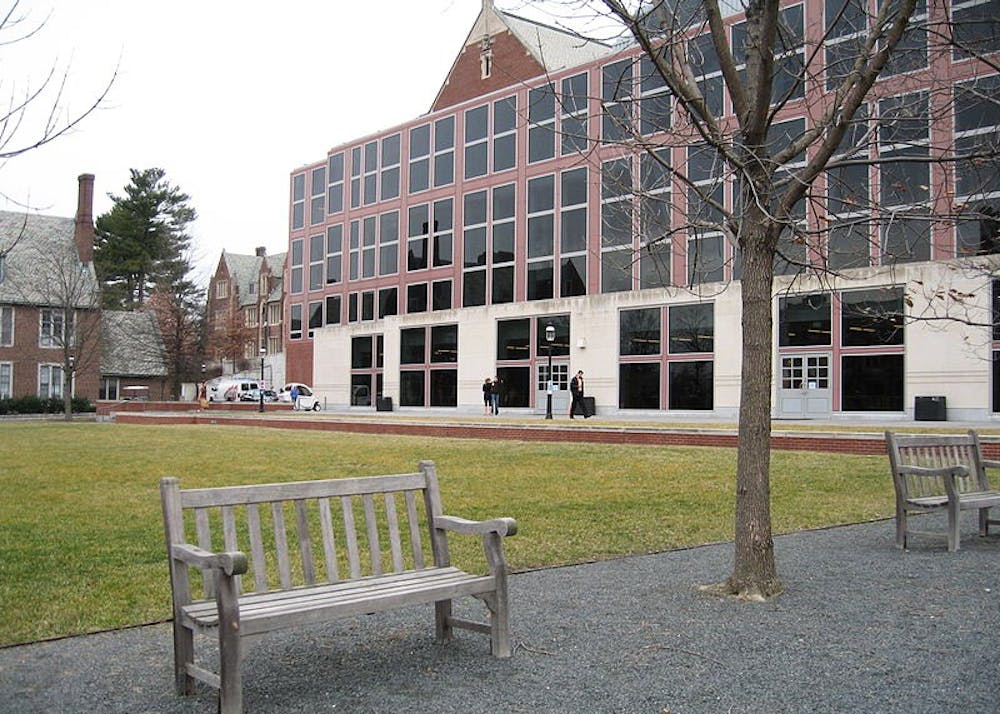
In July of 2016, Princeton HealthCare System announced that it had signed a letter with Penn Medicine confirming their partnership, and the arrangement is now in regulatory review.
Credit: JTerracePenn Medicine’s new partnership with the Princeton HealthCare System is part of a national shift toward incorporating small hospitals into larger health systems that aims to make care more accessible to people in all geographic areas, Penn experts say.
Guy David, a professor of medical ethics and health policy at the Perelman School of Medicine, said Penn Medicine has recently been expanding to local hospitals to provide more specialized and efficient care to a broader population.
“If you look at the purchases that Penn Medicine has made in the last couple of years,” David said, “it’s really buying community hospitals, preparing a system for a world where they can take risk for a large population that they can manage now, as opposed to just sitting back and waiting for the most complex cases to just land on their door.”
In September 2013, Chester County Hospital joined Penn Medicine, followed by Lancaster General Hospital in August 2015, accounting for the five hospitals under the University of Pennsylvania Health System.
Penn Medicine was officially formed as an umbrella organization with a unifying governing body in 2001, with three hospitals: the Hospital of the University of Pennsylvania, Penn Presbyterian Medical Center and Pennsylvania Hospital.
In July of 2016, Princeton HealthCare System announced that it had signed a letter with Penn Medicine confirming their partnership, and the arrangement is now in regulatory review.
Five years ago, David said, Penn Medicine and other hospitals lived in the “fee-for-service world,” where they would be rewarded monetarily by insurance companies for expensive procedures. But in the past few years, instead of rewarding based on the sheer volume of procedures performed, insurance companies have been rewarding health care providers for improving overall patient health. Essentially, healthier patients means fewer complex procedures.
This health insurance model incentivizes hospitals to provide better care, more efficiently, with fewer procedures. It also encourages a more clinically and financially integrated health system to facilitate coordination so that information can be shared across all hospitals under umbrella systems like Penn Medicine.
So under this model, certain factors like poor patient outcomes, or multiple readmissions due to inadequate care will affect the quality measures that insurance companies use to evaluate hospitals. This means that the hospital has to pay more if the overall care for patients is worse, said Amol Navathe, a physician and assistant professor at the Medical School.
“So the notion behind these models is that if you were to do something in a financially motivated way it would still be good for your patients.”
The Affordable Care Act served to accelerate this national trend toward new integrative models of care and towards rewarding hospitals for patient health instead of number of procedures. Navathe said it is difficult to tell whether the GOP health care bill, if passed, will interfere with this trend in health care coverage, although he is hopeful that it will not.
“At this point, health providers have made a lot of investments to try to succeed in those models and health insurance companies have tried to invest a lot in helping their providers be successful in these models,” Navathe said. “If it’s indeed good for patients, there is this sense of alignment between the health insurance companies and the providers to keep moving in that direction.”
The umbrella system results in a highly specialized healthcare structure, which means hospitals see fewer patients with general health problems.
“It used to be that physicians just had to do a fantastic job taking care of patients, but now physicians are seeing less of the coughs and colds and more of the patients with chronic diseases,” Navathe said. “Physicians have now been placed in the role of being organizational leaders and managers.”
This is also changing the way physicians are trained in medical school. There is now an emphasis on understanding the management and financial aspects of medicine, rather than just the clinical training. With the expansion to Princeton HealthCare System, medical students can study a variety of specialties, many of which are not a focus at the hospital on campus.
“By having access to the other outposts of the health system, that allows the medical students to actually go and experience different studies of care,” Navathe said. “This may be a good opportunity for Penn medical students to get access to a new study of care. To the extent that we can integrate our medical education mission there, then that would be positive for the medical students.”
Officials at Princeton HealthCare System and at Penn Medicine both declined to comment for this article.
The Daily Pennsylvanian is an independent, student-run newspaper. Please consider making a donation to support the coverage that shapes the University. Your generosity ensures a future of strong journalism at Penn.
Donate



